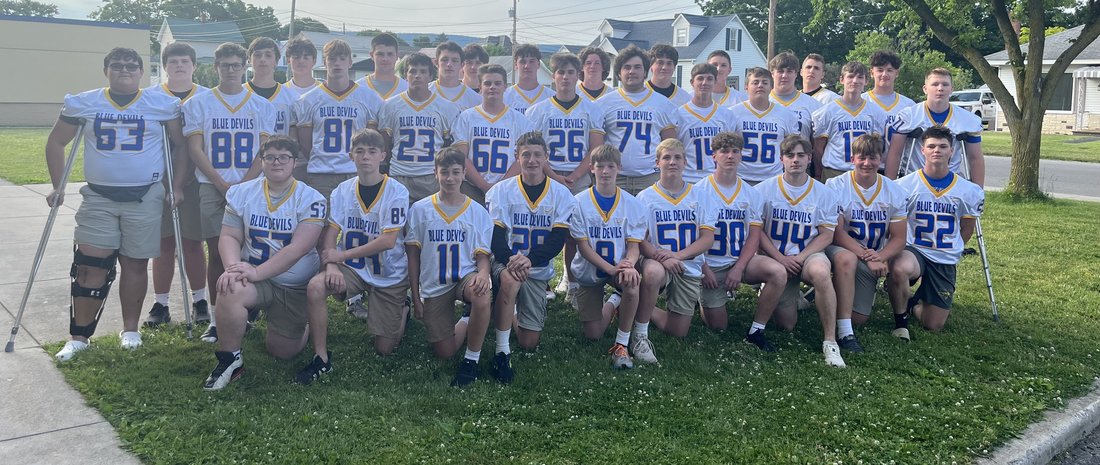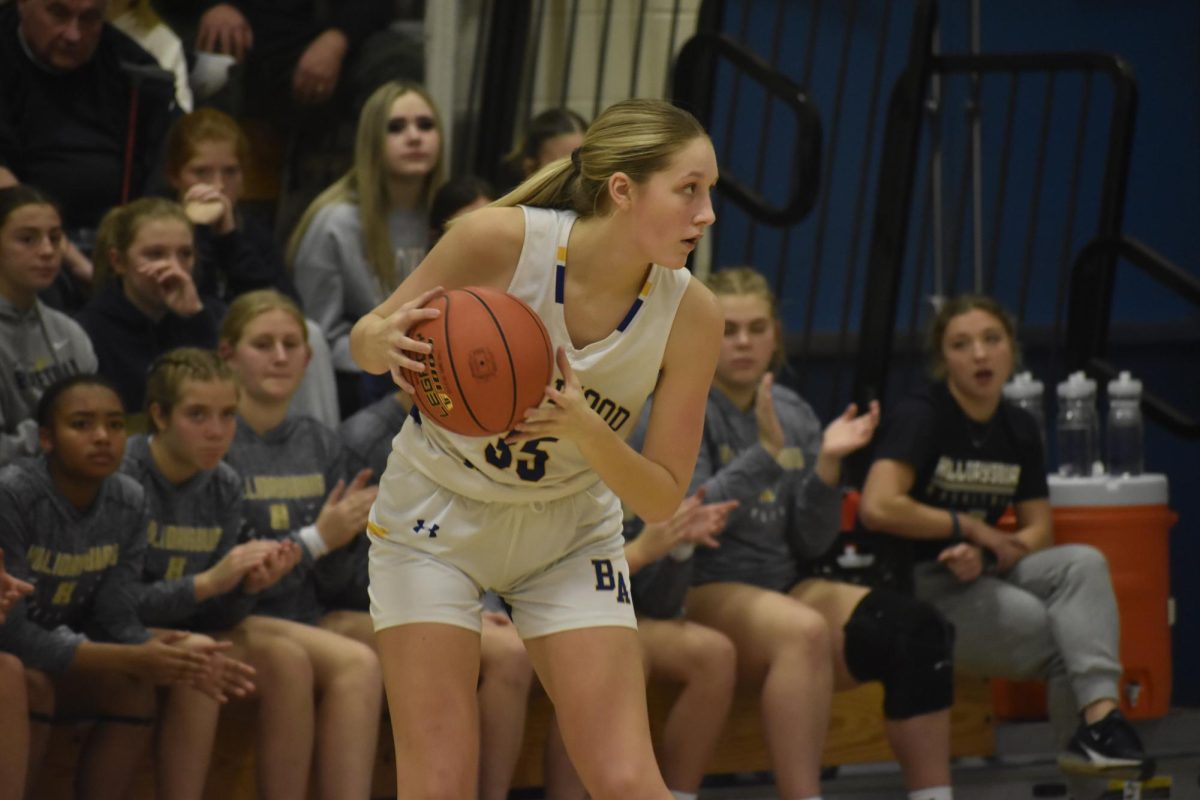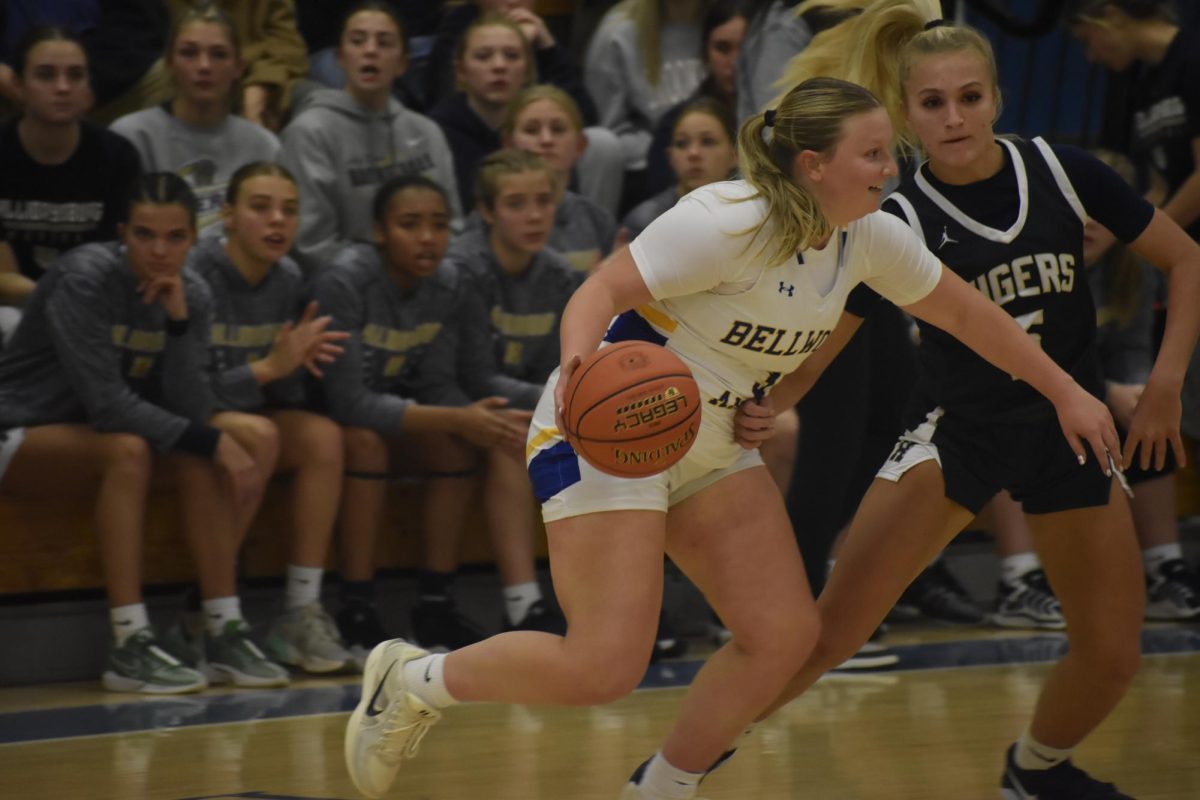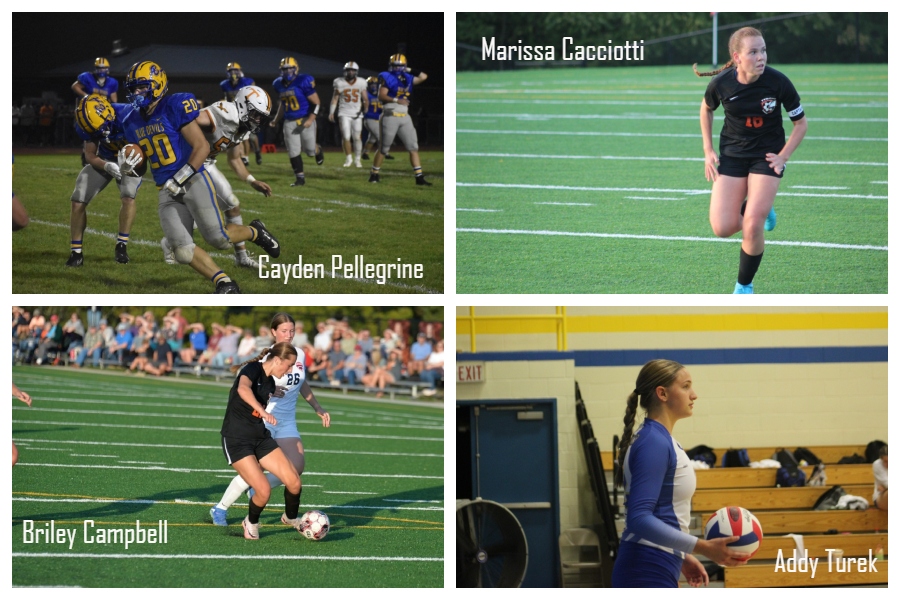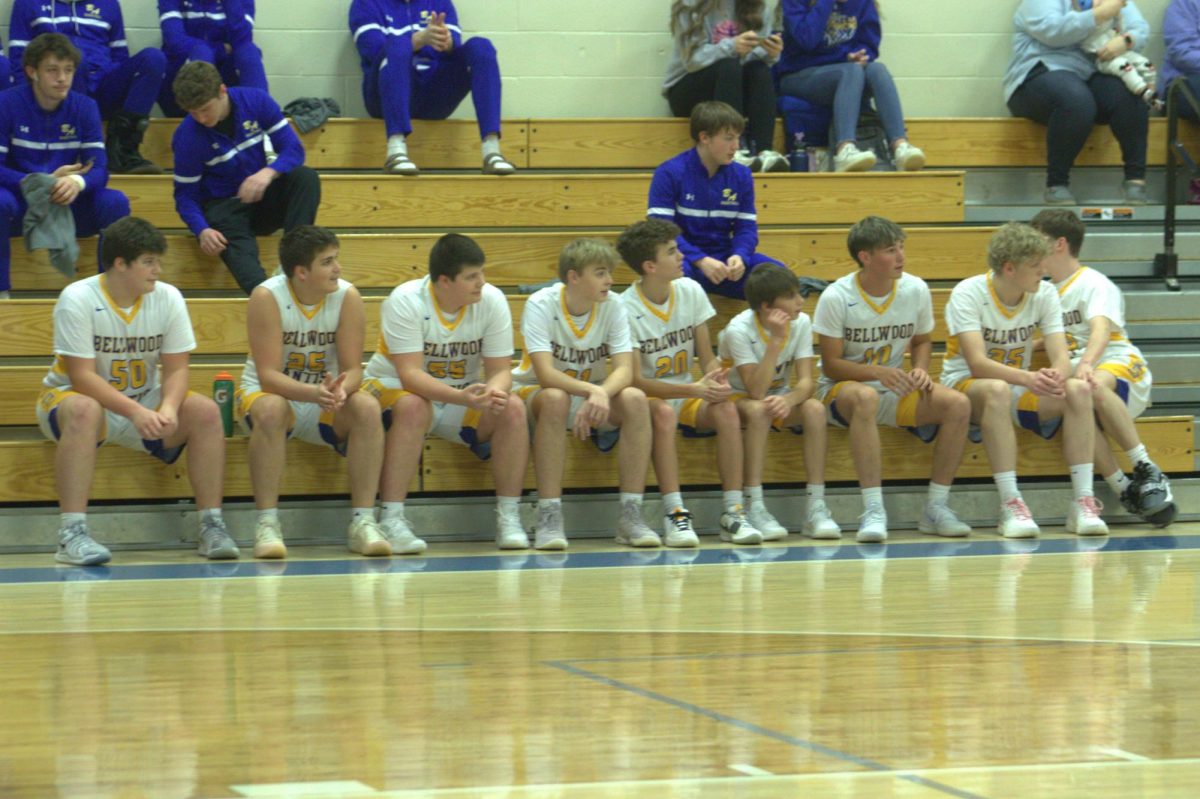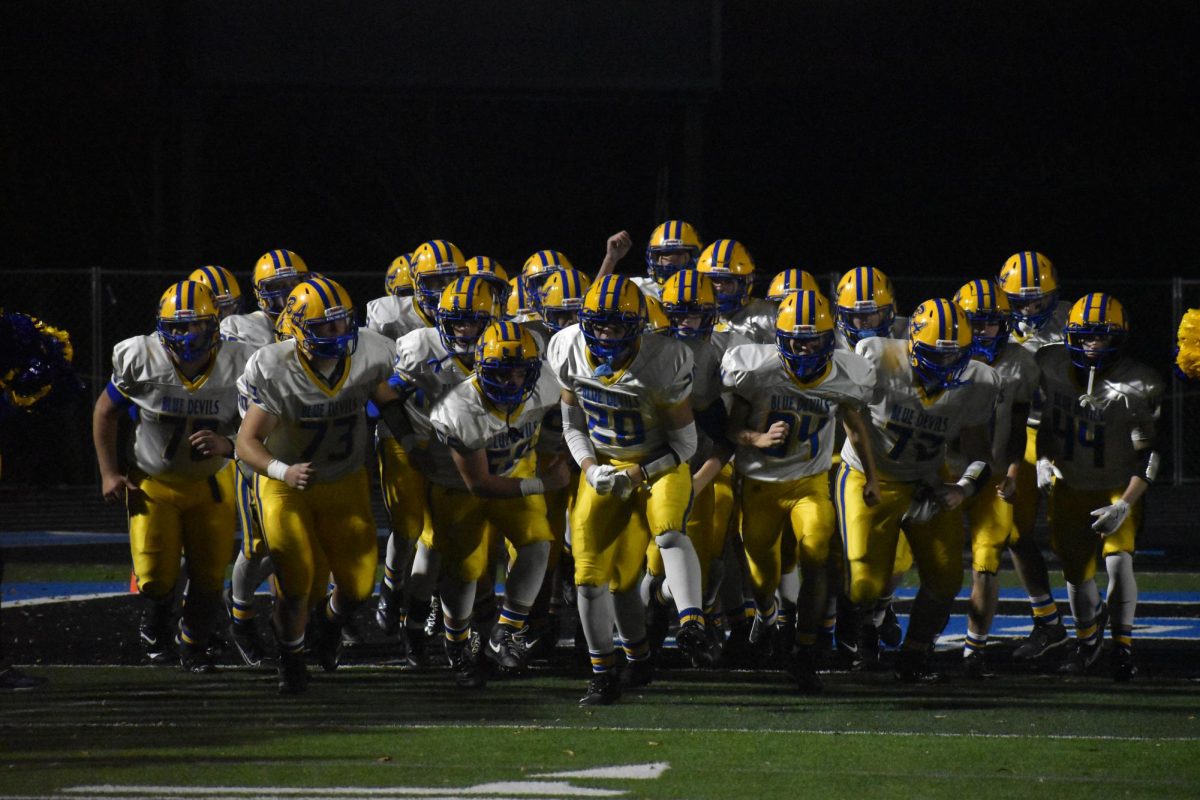B-A takes charge in player safety
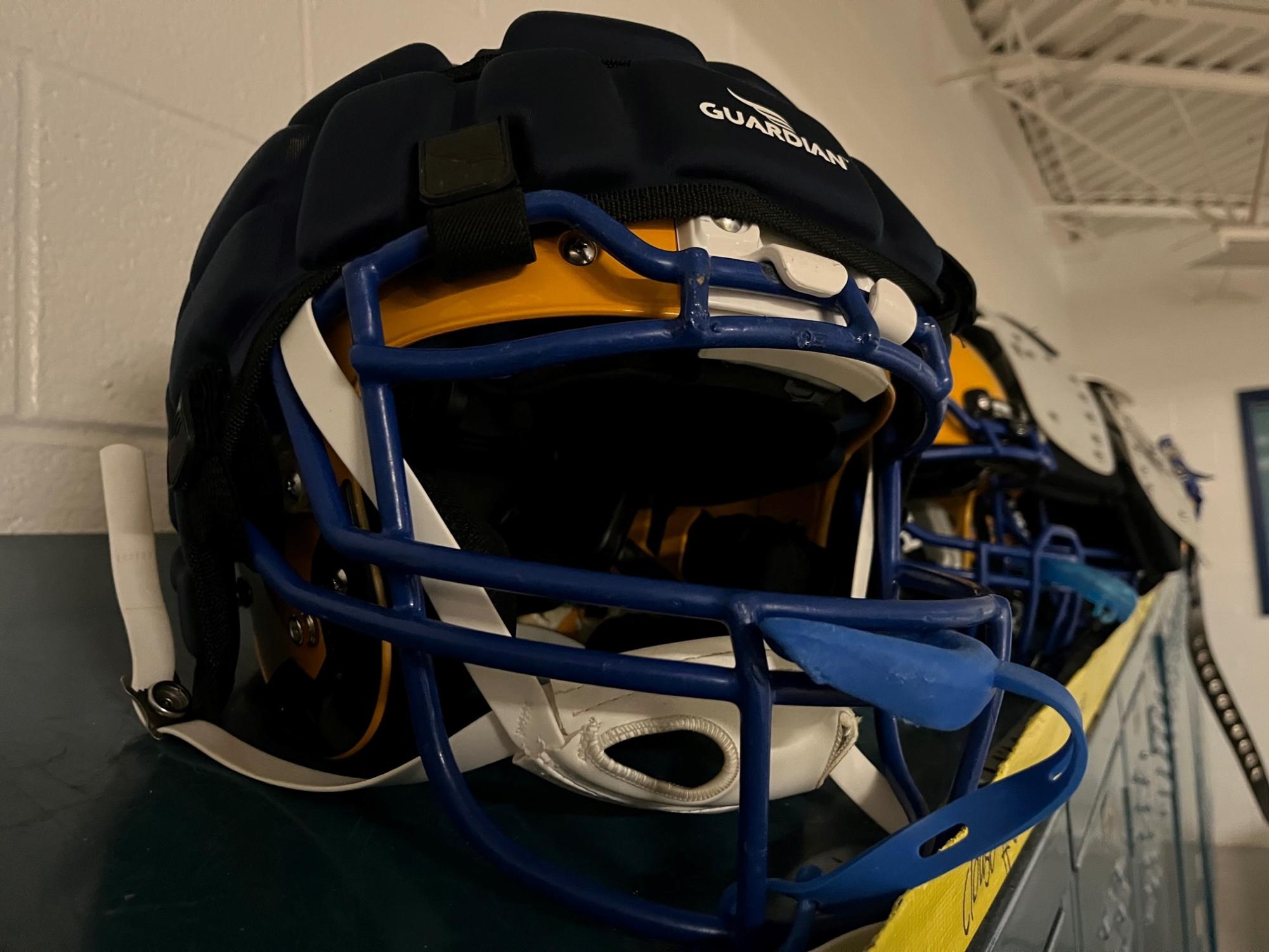
Concussions are bound to happen in football, so precautions are taken to limit how many occur.
Another certainty is that technology is always advancing, and for football players, these advancements could one day be the saviors of their careers.
At Bellwood-Antis, the Blue Devil football team has taken the lead in concussion prevention and head safety through the purchase of Guardian helmet pads for every player in the program from junior high through varsity. However, currently the helmets are only being worn at practice.
Guardians are padded shells worn on the outside of the helmet in practice situations to reduce the effect of sub-concussive hits.
“We saw the trend happening with professional and college kids (wearing Guardians) as a way to protect themselves,” said Coach Richard Schreier.
Concussions at a high school level are no joke. A concussion in the simplest definition is a traumatic brain injury that harms the brain’s ability to function. Concussions are caused by blows to the head or by violently shaking the head or upper body.
Because players often start football at a young age, brain injuries are possible setbacks for the rest of one person’s life. The brain continues to develop until one is in their 20’s, and if one’s brain doesn’t ever fully mature due to an impact that was caused at a younger age, this can severely damage the brain’s overall ability to function. Damage to the brain from a concussion can lead to possible long-term effects like Alzheimer’s, Parkinson’s, and Chronic Traumatic Encephalopathy, or CTE.
These problems can all come from concussive impacts; however, there are other kinds of hits known as sub-concussive impacts, which can be just as harmful.
According to The National Institutes of Health, sub-concussive head injuries are injuries in which an impact to the head does not result in clinical symptoms of a concussion. However, “(w)hile each impact may not cause enough damage to reach threshold of noticeable symptoms, repetition of these subconcussive injuries may compound over time. Together, these cumulative injuries do have dramatic impact due to the microstructural and functional changes that result in the brain.”
In other words, with a concussion, there are obvious signs of cognitive impairment, but a sub-concussive impact is the kind of hit that many players repeatedly deal with while at practice everyday, non-violent impacts a lineman might get from repeatedly blocking, for example.
This is where Guardians come in to play.
“I think it’s a positive thing, and we’re doing everything we can to prevent (concussions),” said head coach Nick Lovrich. “If it helped us prevent one head injury from happening it was worth it. If we did not have (the Guardians), maybe we would have had more instances of head injuries.”
At the high school level, there were about 4 concussions per 10,000 athletes in 2019. That number is trending downward but still requires serious attention. Concussions to players at a younger level can largely impact schooling and other cognitive functions. Most people who experience a concussion at the high school level see problems with being overly tired and emotional or having trouble being able to concentrate and make decisions. Players who sustain concussions now are entered into a concussion protocol to safely establish a return date, and the rule in modern sports is that once a player suffers 3 concussions, they should give up the sport in order to maintain functional brain health. Further, suffering one concussion makes a subsequent one more likely.
B-A has taken the lead in concussion prevention for years, beginning in the 2000s with legendary coach John Hayes, who recently passed away.
“Coach Hayes was very big on concussion prevention,” Lovrich said. “We were one of the first schools to do the IMPACT testing developed by UPMC. We have continued always being cautious with the amount of live hitting we do at practice. We have our players use the rugby tackling form and practice it weekly. This is a method that tries to keep the head out of contact when making a tackle.”
During practices, full contact over the years has become limited in attempt to keep injuries to a minimum.
Coach Lovrich has also implemented a style of practice contact known as “thud.” When thud tackling is in place, players know that the goal is to not injure your teammates, but instead wrap them up with good form to help simulate a legitimate tackle. However, even with thud there is still going to be helmet to helmet contact, which could result in sub-concussive hits.
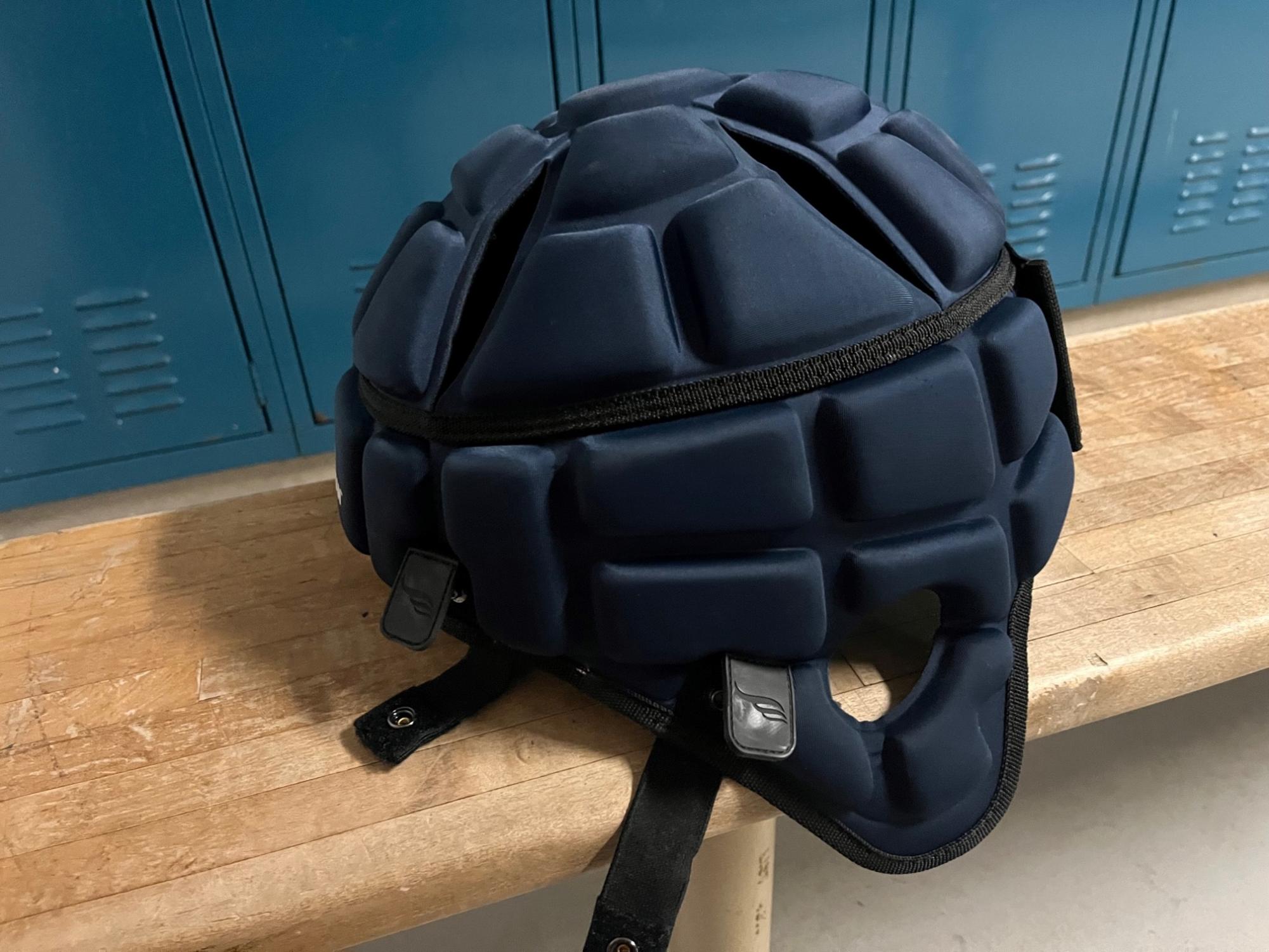
The greatest need for safety that a player can have is at his head area, and the helmet has been evolving since the early 1900’s. Helmets started as leather caps, then progressed to a suspension system, but were never mandated to be worn until 1943. In 1949, Riddell’s first helmets started to become worn by the NFL, and the original design copied helmets made for soldiers during WWII.
During the 50’s and 60’s helmets changed to a plastic shell with a single bar in the front. Common injuries that were relatively common for the time were broken noses or jaws. The facemask at the time was just as revolutionary as the outer shell itself because now there was a way to protect a player’s full head. Helmets have continued to change and become safer over the years, and the newest way to help sustain blows to the head comes with better systems of cushions to soak up more of that impact.
In the later years of the 20th century, helmets began to be redesigned from the inside out. These helmets now had pads made out of a thicker foam or air pads on the inside that would help limit the forces of the blows that were given to players.
It was an enormous evolution from the days when Coach Lovrich played in the 80s and early 90s.
“Helmets are so more advanced now,” he said. “With the air pockets in the helmet you get a better fit for each individual player, which is an added safety feature.”
In 2008, Riddell took the design of helmets to the next level, designing a lighter, more protective helmet than ever before. The name of this helmet was the Riddell Speed, designed to be more of a modern version of its predecessor the Revolution. The original Revolution weighed in at about 4lbs, 4oz, while the speed was cut down to 3.7lbs. For years after its creation, the Riddell Speed was rated a 5 out of 5 on Virginia Tech’s helmet rating scale.
Then, in 2014, Riddell designed a version of the Speed that was even more protective. The name for this helmet is the SpeedFlex. The SpeedFlex came in weighing 4.55lbs which is drastically lighter than the Speed. One of the SpeedFlex’s biggest technological advancements comes in its ability to absorb the impact. The “Flex” part of the name comes from its ability to direct off the impact onto a players head by adding a new version of interior padding, and a new style of cutouts on the outer shell of the helmet.
Most recently in 2022, Riddell released the most futuristic football helmet ever seen. They named it Axiom. One of the biggest advancements that Riddell developed was the ability to 3D capture a players head, and then add customized pads that fit around that players head better than ever before.
The Blue Devils were among the first to use the Riddell Speedflex helmet and then purchased the Schutt F7 a few years later.
Even with improvements to helmets, there was a need to address the reality of day-to-day subconcussive hits.
Guardian helmet caps, which were mandated for all NFL teams in 2022, take concussion safety to the next level. Local schools like Bishop Guilfoyle and Tyrone have not yet invested in this new form of safety. However, at B-A, both the varsity and junior high football teams are required to wear Guardian caps to limit the amount of injuries in practice. These pads were funded by the Bellwood-Antis Quarterback Club at a cost of $69.99 each, so with more than 70 players in the program, it is a big investment.
Guardian has been backed by the NFL since 2017, where they were the winner of the HeadedHealthTECH Challenge. The HeadedHealthTECH Challenge is almost like a competition to come up with and design the safest helmets that can be worn or used by all NFL players.
Padding on the outside of the helmet works to lower and soften the overall forces and damage onto the hard plastic shells. Guardian’s basis of research comes from looking at the facts and statistics that were recorded when helmets were hit shell to shell compared to pad to pad. According to the Guardian website: “It brings a padded, soft-shell layer to the outside of the decades old hard-shell football helmet and reduces impact up to 33 percent.”
Not only do these pads soften blows from head to head contact, but they also prevent damage to other parts of the body when hit. Nothing hurts more than taking a hit from the hard shell of a helmet straight to the knee cap or unprotected shin.
Guardians have made an impact with B-A players, giving them extra peace of mind during intense practices.
“I feel safer whenever I’m wearing them,” said senior tight end Chance Schreier. Added junior Griffin Kyle, “They work, and you can’t even feel that they’re there.”
Coach Lovrich said the Guardians can be put on and removed in a minute’s time, making them quite convenient for practices.
The one concern Lovrich had was how the product would affect players when it’s hot outside, but there was no problem at all.
“It did take a little adjustment at first … but we found that the kids adjusted and got used to them,” he said. “It has become a normal process of taking them off for the game and getting them back on for Tuesday’s practice. Anything we can do to try and keep the kids safe is a benefit.”
Guardian caps spread quickly to colleges and high schools all around the country. They are used by over 300,000 total athletes nationwide already, which includes 3,000-plus high schools, more than 275 colleges, and all 32 NFL teams
There may even come a time when schools move to wearing them in games.
“I could see it possibly going(wearing the caps during the games), and the question is why don’t we wear them all of the time,” said Coach Lovrich.
Bellwood Athletic Trainer Jessie Glass supports further research to determine the benefits of usage at a high school level.
“I would like to see what that (testing on the caps) would be like during live hitting,” he said.
Glass also questioned how much research was available on the use of Guardians at high school practice. “If there’s valid data of reducing the risks of them (concussions), why not wear them during games?” he asked.
While a coach or trainer can attempt to do everything they can to limit certain injuries, most of the time it just comes down to how the players themselves play. Lineman are players that this product is targeted for the most.
“Last year hitting kind of hurt. This year it doesn’t hurt as much,” said sophomore lineman Quinn Focht.
Sophomore Christian (Chug) Jennings also said, “I can only go off one little problem. At the beginning of the season, usually I have a period where my head hurt. I haven’t experienced that this year. Originally, I thought they looked annoying.”
B-A completed its season last week with a 40-6 victory over Greater Johnstown. When asked if the pads made a difference, Coach Lovrich said it was hard to immediately tell because the team did experience some concussions throughout the season, but “most of the ones we have had happened in game,” he added. “The main issue with judging the injury is being able to determine what injuries are actually from practice and actually from the games. With the padding it does feel like it’s making a difference in practice, but because they aren’t worn in game, the opportunity for injury always exists.”
It may be impossible to regulate injuries out of the game of football, but advancements like Guardians are a step in the right direction.



